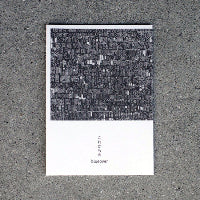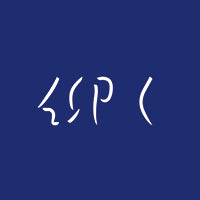#01 |torinoko Shiratori|YOT WATCH Designer
From Friday, November 29th to Sunday, December 15th , we will be holding a pop-up event for YOT WATCH , colorful watches made from recycled toys.
To commemorate this event, we interviewed Hiroyuki Shiratori, director and designer of torinoko Co., Ltd., the company behind the design of YOT WATCH . We delve deep into the design philosophy of torinoko , as well as the secret story behind the design that breathes new life into discarded toys. We hope to delve into the new appeal that cannot be seen from the catalog specifications.
Please take a look.
Designer Profile

Director and Designer
Owner of torinoko store
Hiroyuki ShiratoriAfter graduating from Tama Art University (Product Design Department, Product Design major), he studied abroad in Germany, and then worked at Ryohin Keikaku Co., Ltd., where he was mainly in charge of design and product planning for MUJI home appliances and tableware. He currently designs a wide range of products, from precision equipment to handicrafts, using materials such as resin, metal, glass, wood, and paper.
Part-time lecturer at Showa Women's University (2022-)
Part-time lecturer at Musashino Art University (2024-)
interviewer
Itome
A newcomer to BATON Co., Ltd., which develops the sneaker brand blueover. A 25-year-old who has studied design for six years and is struggling with design.Our design stance: "Looking and discovering"
<Thread>
You were in charge of product planning at your previous job at Muji Co., Ltd. What kinds of things did you mainly design?
<Swan>
When I was at Muji, I was in charge of everything that had electricity running through it. That was all the home appliances, from the clocks lined up in the store to the electric fans and washing machines. I was in charge of that for about 10 years, with only one person (or sometimes just a few people). I worked there as a designer, and my senior at the time is Koyama, who is now the president of the company and works with me.
<Thread>
So you were in a senior-junior relationship. I had imagined you were in the same year as your classmates, so this was surprising.
<Swan>
I initially joined Muji as a part-timer, and torinoko had been active as a unit since my time at Muji, so the hierarchical relationships have not changed much in some ways even now.
<Thread>
Torinoco's design stance is based on the theme of "creating things through observation," which I feel has something in common with Muji's ideals of "a desirable relationship between people and nature" and "a rich human society."
I would like to hear more about this process of "manufacturing through observation and discovery."
<Swan>
Yes, that's right. My experience working at Muji was a big influence. By "gazing", I meant my desire to gain as many new insights as possible in product development, and to use those insights to gain new hints and develop interesting products. I not only looked at things, but also had the opportunity to visit artists' production sites and factories, where I made some interesting discoveries. The materials and manufacturing methods were interesting, and of course the products they made were wonderful, but I thought it would be great if we could create something new from our own perspective.
Having seen both ends of the spectrum, mass production sites and craftsmanship by artisans who can only make a few items a day, I have noticed that even if they are the same manufacturing, they are not exactly the same, and there are some parts that do not apply even if the same thing is said. When working for a large company, it is easy to make demands on small-scale production as if it were mass production. Of course, costs are also involved, and distortions can occur where no one benefits or is happy.
We feel that since each person has their own way of making things and their own way of thinking, there must be a form that suits each of them, and we would like to inject new and interesting elements into that and create it in our own way.
 MUJI Ryohin Keikaku "Park Clock Mini White"
MUJI Ryohin Keikaku "Park Clock Mini White"Connecting the dots
<Thread>
Our company also produces in small quantities, so I do feel that there are differences in the way large companies and small companies and factories think about production and costs. I think there are ways of manufacturing that are suitable for each, but I think the criteria for making them differ from each perspective. For example, on the production side, it's about profitability, while on the consumer side, you want to buy things cheaply.
Since I started working at this company (blueover), I have come to see the consumer, manufacturer, and retail sides of each. I feel that it is difficult to achieve a system that satisfies everyone. I am curious as to what criteria are used to determine whether something is acceptable.
<Swan>
That's right. It's impossible to achieve everything if you try, so it's important to clearly identify what you need to do. I think it's important to clarify what each person is looking for.
Recently, while teaching at Musashino Art University, I was talking with the professors I worked with about "making the problem smaller." "Let's change the world" often doesn't solve anything in the end. First of all, I think it's important to make the problem smaller, narrow down what people want and what they need to do, and solve it. If you're a producer, you can just make this happen, and you might talk about profit, or sales. As a customer or consumer, you probably want something cheap and easy to use. It's important to match that up well. It depends on the case, so I can't generalize. Personally, I like the task of picking up context and connecting the dots. When drawing a line between the resources of a factory or manufacturer and the customer, I like the task of imagining what elements should be added and how to make them happy and enjoy themselves.
Communication through objects
<Thread>
You talk about "connecting the dots," but do you think of design in a narrow sense (design of visual and physical shapes and designs) or in a broad sense (as a problem-solving or planning process)?
<Swan>
I believe it's the latter.
<Thread>
Is the medium that connects the dots a product? Or is there another pattern, such as communication?
<Swan>
Since my specialty is products, the product is the main focus, so that is the axis. I think that there are many cases where designers create unique products and exhibit them at exhibitions, but although they can make interesting products, I feel that they often end up not selling. Although our goal is to create something that will sell, we are trying a process where, for example, we actually use it within the company, and then unveil it after getting approval for it, such as "That's good, that's right." The product comes first, but I think it's good not only to sell it, but also to first prepare an environment for ourselves to use it. There is also a part of me that believes that good things will spread naturally. BtoB companies have few opportunities to interact with designers, so it is often difficult when a designer suddenly comes and gives you a drawing. We do this intentionally because we want people to know "what it means to work with us in the first place." I think that there is also such a way of communication and interaction.
<Thread>
Following the current trend, it has become a kind of trend for the government to match factories with designers and exhibit at events. I don't know if that's good or bad. However, as Shiratori said, this initiative is not without its challenges. In terms of letting people know how to do things, people on the manufacturing site often don't understand design very well. Among them, Torinoco's stance of "looking and finding problems" seems modest and unspectacular, but I think it takes cost and effort to get people to understand it. To take it to the extreme, they could just make something with a design that is likely to sell in the market, but I took it to mean that they choose not to do that because they believe that it is the right thing to do and want to convey that in the long run, that is the true form of design.
<Swan>
That's right. In the end, when we make things for ourselves, we don't want to make things we don't want to use, and we don't want to give them to our parents, for example, if they don't understand or say, "I don't need that." That's what it's based on. Originally, we were making things that are close to people's lives, and it's also connected to the story about the factory, but we want to make products that people can experience for themselves, as if it were something that concerns them. First of all, we need to get the people at the factory to understand, "This is what it's all about," and it may be a roundabout way of doing things, but we think it's important to gradually get them to experience for themselves, "This is how design can change things, it's important."
<Thread>
In other words, it's about having the creators experience it for themselves. Rather than explaining it in words, it's about creating a situation where they can understand through the object, "Oh, so that's what it was like."
<Swan>
Work that you are forced to do is boring, isn't it? If the work that your boss tells you to do is not interesting or that you don't want to do, you won't feel like doing it. For example, children will continue to do what they love until they are told to stop. When you love something, your hands will start moving, so I hope that by working with us, you can bring that kind of feeling to people.
YOT WATCH

YOT WATCH " 40mm model (top), Kids model (middle), 32mm model (bottom) "
Our work is an extension of our own lives. We want to present the better state (society) that we envision. In that sense, I really empathize with Torinoco's design stance. I think YOT WATCH is also connected to that stance... What points did you have in mind when creating it?
That's right. It's easy for children to wear. My daughter is just 5 years old, and I designed it with the idea of wanting my child to wear it and going out with her on our days off in mind. I designed it not just with the idea that it would be "cool," but with a sense of the worldview.
<Thread>
The YOT WATCH has a distinctive resin case made from recycled discarded toys. I imagine that using resin opens up many possibilities, but what keywords and concepts led you to go from a toy to a watch?
<Swan>
We are particular about the characteristics of resin used in toys. Not only is resin a very good and attractive material that can be recycled, but there are actually many different types. Even within a single product, different materials are used depending on the part used, but the ABS resin we are using this time is versatile and strong. YOT WATCH is also particular about surface processing, and we can change the texture of the dial or change the appearance even with the same resin, allowing for freedom in terms of flavor. With wood, we have to process it, but with resin, it can be made with one mold. We made it using our experience of making home appliances for 10 years.
 YOT WATCH "32mm various colors"
YOT WATCH "32mm various colors"
<Thread>
Regarding the colors of YOTWATCH, it is easy to imagine using vibrant colors for the dial, but why did you choose to color the band and use a more subdued color scheme for the dial?
<Swan>
I wanted to make it possible to change the strap from the very beginning. If the watch itself is colored, it becomes difficult to match the color with the strap, so I kept the watch body simple and allowed people to play around with the strap.
<Thread>
The wide variety of strap combinations is also an iconic feature that makes YOT WATCH stand out. By the way, it is a toy with a colorful image, but does the resin become closer to black when mixed with other colors?
<Swan>
The khaki color of the YOT WATCH series is almost the same color as the recycled resin. It turned out to be a nice color unintentionally, so I wanted to make use of it as it is. Black, gray, and khaki are the base colors of the watch body. The khaki color is the color of the base material that has not been colored.
<Thread>
I imagine there will be some variation in color depending on the toys collected, but is this acceptable?
<Swan>
It may change slightly each time, but I think that's interesting in itself. It's easy to explain as recycled, and it's a bit strange to say "we add pigments to adjust it," so I think it's fine to say "we don't add any." The black and light gray are colored by mixing pigments.
<Thread>
I see, so some are colored. I would imagine that coloring them would reduce the recycling rate...
<Swan>
In some recycled trays, the ratio of recycled resin is adjusted, so if you try to make it using only the color of the resin, it will end up being the khaki color of YOT WATCH.
<Thread>
Certainly, the deep khaki color makes a difference in the impression of food. The ratio of colorants is deliberately lowered to make the color more vivid. It seems like the color would become cloudy when recycled, but it turns out to be a vivid color. Besides colorants, is it possible to stabilize the physical properties by limiting the plastic materials?
<Swan>
There are many different types of resin, so we want to limit the materials as much as possible. Although there is technology to separate the materials during the crushing process, it is easier and more stable to collect specific resins in order to increase purity and avoid mixing as much as possible.
<Thread>
I see. The YOT WATCH was created with the characteristics of the material in mind, and goes beyond being just a wristwatch. It feels like a step towards a recycling-oriented society. The story behind it makes it easy for children to relate to. For example, what other products besides watches were possible?
<Swan>
At first, we were also thinking about stationery. We were thinking of giving it as a gift when the child starts elementary school, or something that can be used at school.
<Thread>
Clocks also help elementary school students learn about time.
<Swan>
I think YOT WATCH is a product that shows connections. It's not just about "we made a watch" or "we recycled it," but about the connections between what each person wants.
<Thread>
That's great. Good story.
 YOT WATCH “40mm Khaki / Khaki”
YOT WATCH “40mm Khaki / Khaki” Local toys and workshops
<Thread>
I'm going off topic for a moment, but I was wondering about the term "design trading company" in the company profile. There are other terms such as design office and design studio, so why is it called a "design trading company"?
<Swan>
It all started when President Koyama said, "Wouldn't a trading company be good?" You don't hear much about "design trading companies," do you? No one has done it before, so why not? We agreed, "That's true, we've never heard of it, so it might be good." At torinoko store, we purchase and sell local toys. Although we can't call the store a trading company, we do connect companies, so we thought it might be okay to call ourselves a trading company. We don't just do design, so calling ourselves a design firm is a bit narrow. We wanted to express ourselves more broadly, so we thought "design trading company" would be good.
<Thread>
I see. In my opinion, there are two types of designers: those who actively manage themselves, and those who work behind the scenes and avoid media exposure. What is your position in this field?
<Swan>
It's the latter (laughs). I think it's better for the product to shine first. Then we can follow suit. The ideal situation would be for people to say, "I know this product."
<Thread>
Does this mean that awareness is still low?
<Swan>
Maybe our advertising is weak...
<Thread>
But I had seen the paper mache works that Torinoco made before. What made you decide to make local toys?
<Swan>
It all started when Koyama started making "Fukukan" cans for Ryohin Keikaku as a promotion for the New Year. At the time, they were featured in magazines like Brutus and there was something of a boom in local toys, so we thought "this kind of world would be nice too," and started it together with support for the Tohoku earthquake disaster. I had seen what Koyama was doing out of the corner of my eye, and I decided to join in.
<Thread>
Some of the paper mache pieces currently on sale at the torinoko store are original torinoko items and have interesting structures.
<Swan>
The dinosaur paper mache that was recently released is original. Paper mache is basically hollow, with paper pasted on the outside. It is quite a hassle to paste the paper on the mold, break it, and take out the mold. It takes time and effort. Some of the paper mache at torinoko store is made by a job support facility in Nara, Good Job! Center Kashiba is making them, and in order to make them as easy as possible, they use a method of pasting paper onto a mold made with a 3D printer. This is not a method we came up with, but there are people who make things like this already, and we've been friends for a long time, so we're working together.
 torinoko store Goryu Paper Mache Nishiogi Torinocotopus (left), Nishiogi Torinocodon (center), Nishiogi Trinocosaurus (right)
torinoko store Goryu Paper Mache Nishiogi Torinocotopus (left), Nishiogi Torinocodon (center), Nishiogi Trinocosaurus (right)

<Thread>
How did you get connected with Good Job! Center?
<Swan>
There is a company that makes braille textbooks for visually impaired people near our Tokyo office, and we started making our own paper products using braille printing technology, the work that led to the formation of Torinoco. This was over 10 years ago, when the Good Job! Center Kashiba was running a Good Job Award, and they were focusing on creating things with people with disabilities all over the country. From then on, we started making paper mache, asking each other, "Can you do this?" and "Can you do that?" From the beginning, they were doing a lot of interesting things, such as 3D printers and 3D scanners.
<Thread>
When I follow Torinoco's Instagram, I get the impression that you often hold paper mache workshops. I had the impression that design offices don't hold many workshops...
<Swan>
I've always liked it, but I also like events, so I hold workshops. I want to directly convey the fun of it to a wide range of people, and I want them to not only enjoy making products, but also enjoying making them together.
The future of torinoko
 torinoko store Nishiogikubo
torinoko store Nishiogikubo <Thread>
Currently you seem to be doing a lot of client work, but is there a possibility that in the future you will focus on selling your own products?
<Swan>
Yes. We would like to increase sales of our own products. We have an office and store in Tokyo, so we would like to utilize that. We are also experimenting with making wooden products in Kyoto, so we would like to sell those as well. It's still in the planning stages, but...
<Thread>
Is the wooden furniture at torinoko store also derived from this?
<Swan>
That's right. We want to communicate through our products and generate sales.
<Thread>
I feel that there are more and more cases of "making and selling" even at design offices. I think that this model will become the standard as a general trend.
<Swan>
In the past, it was very difficult to make and sell things, but recently good 3D printers have become widespread, and I feel that business is expanding even at the individual level.
<Thread>
I think the strategy and stance will be different between sales to maintain the company and sales to continue doing what you want to do. We (Blueover) are in the latter category. Our direction is to secure enough sales to live in order to continue doing what we want to do for a long time. In the past, every company had a culture of constantly growing and growing, but recently this has not been the case.
<Swan>
I also enjoy working with a company that has that kind of stance.
<Thread>
We think it's good to work in a place where "sales" is not the only value that takes precedence. I think that Torinoko's stance was apparent in YOT WATCH. And after listening to your story, I felt that this was exactly the case. Although it started with YOT WATCH, we would also like to hold a local toy event together, so we hope you will cooperate with us.
<Swan>
Thank you very much. I am very happy that you have come to understand our stance through YOT WATCH. We do not simply "make and sell," but want to create a place where people can connect with each other through products and craftsmanship. I hope that the local toy event will be such a place, and I hope that it will touch everyone's hearts. I hope that our office and store in Tokyo will not just be a place to display our products, but a place where people can visit, interact, and experience our craftsmanship. Thank you for your continued support.

torinoko store " Osaka Paper Mache Tiger Paper Mache Baby Tiger
-
INFORMATION
YOT WATCH Popup at struct
Date: November 29, 2024 (Friday) – December 15 , 2024 (Sunday)
Time: 12:00 - 19:00
Closed: Tuesday to Thursday
Location: struct
Address: Sanyamato Building 1F , 2-3-4 Kyomachibori, Nishi-ku, Osaka



